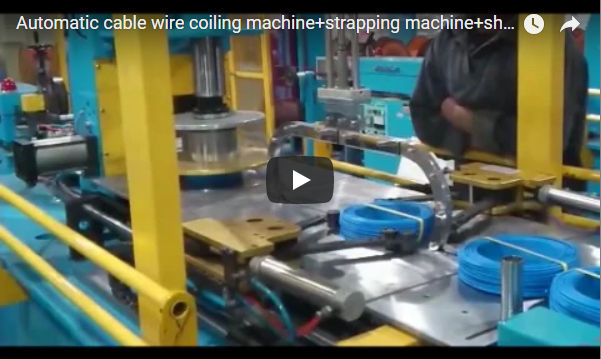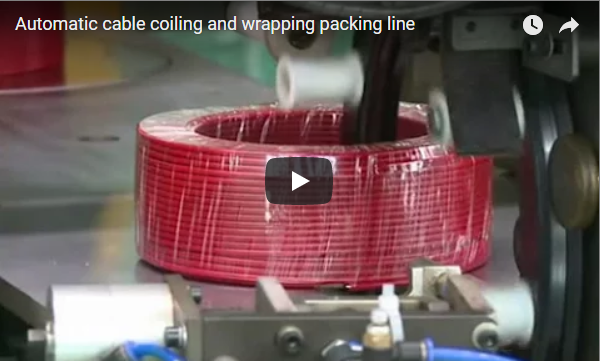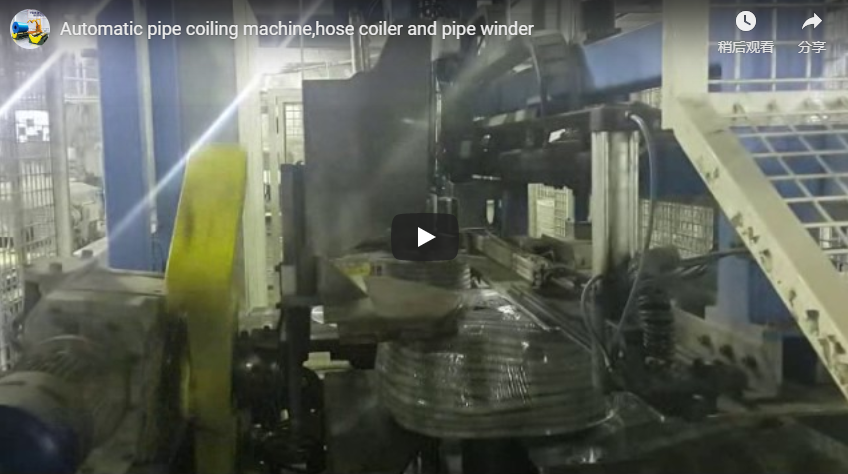Automated Pipe and Hose Coiling & Strapping: Enhancing Efficiency in Flexible Conduit Packaging
The handling and packaging of flexible pipes, hoses, and conduits present unique challenges in manufacturing and distribution environments. Manual coiling and strapping processes are often labor-intensive, time-consuming, and can lead to inconsistencies in coil dimensions and packaging integrity. Addressing these inefficiencies is crucial for industries ranging from irrigation and construction to automotive and telecommunications, where streamlined logistics and product protection are paramount. Automated solutions, such as integrated coiling and strapping machines, represent a significant technological advancement, directly tackling these operational bottlenecks.
Addressing Key Manufacturing Challenges
Manual handling of lengthy, flexible materials poses several well-documented challenges:
- Labor Costs & Ergonomics: Manual coiling requires significant manpower and involves repetitive motions, increasing labor costs and the risk of musculoskeletal injuries. Ergonomic studies frequently highlight these tasks as high-risk.
- Inconsistent Quality: Achieving uniform coil diameter, density, and secure strapping manually is difficult, leading to variations that affect storage, transport, and end-user perception.
- Packaging Speed: Manual processes often create bottlenecks, limiting overall production throughput, especially in high-volume operations.
- Product Damage: Improper coiling or strapping can kink, flatten, or damage sensitive hoses and pipes during handling and shipment.
Automated coiling and strapping systems are engineered specifically to overcome these hurdles. By mechanizing the process, manufacturers can achieve significant improvements in speed, consistency, and safety, often realizing throughput increases cited in industry case studies of upwards of 30-50% compared to manual methods.
Operational Principles and Key Features
Modern automated pipe and hose coiling and strapping machines integrate several sophisticated subsystems controlled typically by a Programmable Logic Controller (PLC) with a Human-Machine Interface (HMI) for ease of operation and parameter adjustment. The typical operational sequence involves:
- Infeed and Measurement: The pipe or hose is fed into the machine, often guided by rollers. Precise length measurement systems (e.g., encoder wheels) ensure accurate coil lengths according to pre-set parameters.
- Coiling: The material is wound onto a forming head or mandrel. Advanced systems utilize servo-driven controls for precise speed and tension management, ensuring tightly wound, uniform coils without damaging the product. Technologies reflected in recent patent filings often focus on adaptive tension control and automatic diameter adjustment mechanisms.
- Cutting: Once the desired length is reached, an integrated cutting mechanism cleanly severs the pipe or hose.
- Strapping: The completed coil is automatically transferred or indexed to a strapping station. Strapping heads apply, tension, seal (typically via heat or ultrasonic welding), and cut polypropylene (PP) or polyester (PET) straps at designated points around the coil's circumference, securing it for handling.
- Ejection: The finished, strapped coil is automatically ejected onto a conveyor, accumulator table, or directly into a bagging or palletizing system.
Key System Parameters:
- Material Compatibility: Designed for various flexible materials (PVC, PE, PEX, rubber, corrugated conduit).
- Pipe/Hose Diameter Range: Typically accommodates ranges from 10mm up to 60mm or more, depending on the model configuration.
- Coil Dimensions: Adjustable inner diameter (ID), outer diameter (OD), and width.
- Coiling Speed: Variable, often reaching speeds suitable for matching upstream extrusion line outputs (e.g., up to 60-100 meters/minute).
- Strapping: Configurable for 2, 3, or 4 strap applications per coil; adjustable strap tension.
- Control System: PLC with touchscreen HMI allowing recipe storage and selection for different product types.
- Safety Features: Comprehensive guarding, interlock switches, emergency stop circuits, and sensor arrays compliant with industry safety standards (e.g., CE, OSHA).
Tangible Benefits and Return on Investment
Investing in automated coiling and strapping technology yields substantial operational and financial advantages:
- Increased Throughput: Continuous, automated operation significantly outpaces manual methods, reducing cycle times and increasing overall output.
- Reduced Labor Costs: Automation allows for labor reallocation to higher-value tasks, reducing direct labor expenses associated with packaging.
- Improved Product Quality & Presentation: Consistent coil dimensions and secure strapping enhance product protection, reduce transit damage, and provide a more professional appearance.
- Enhanced Workplace Safety: Eliminates strenuous and repetitive manual tasks, reducing the risk of workplace injuries.
- Optimized Material Usage: Precise control over strap tension and application minimizes material waste.
- Streamlined Logistics: Uniformly sized and secured coils are easier to handle, stack, palletize, and transport, optimizing warehouse space and shipping efficiency.
The return on investment (ROI) is typically calculated by comparing the initial capital expenditure against the cumulative savings in labor, material waste reduction, improved efficiency, and decreased product damage over the machine's operational lifetime.
Integration into Production Lines
These machines are designed for seamless integration into existing manufacturing workflows. They can be positioned downstream from extrusion lines, cutters, or printing units and upstream from automated bagging systems, stretch wrappers, or palletizers, creating a fully automated end-of-line packaging solution. Customization options are often available to accommodate specific plant layouts, material handling requirements, and industry-specific packaging standards.
One example of such advanced machinery is the Pipe Coiling and Strapping Machine offered by Fhopepack. This type of equipment embodies the principles of robust construction for industrial environments, user-friendly PLC-based controls for operational flexibility, and a design focus on reliability and maximizing packaging efficiency.
Future-Proofing Packaging Operations
In an increasingly competitive global market, optimizing every stage of the manufacturing process is essential. Automating the coiling and strapping of flexible pipes and hoses moves beyond simple cost-cutting; it's a strategic investment in quality, efficiency, safety, and scalability. By embracing such technologies, manufacturers can ensure their packaging operations are not a bottleneck but a streamlined component of a lean and competitive production system.
For more detailed specifications or to discuss your specific application, please contact info@fhopepack.com.





